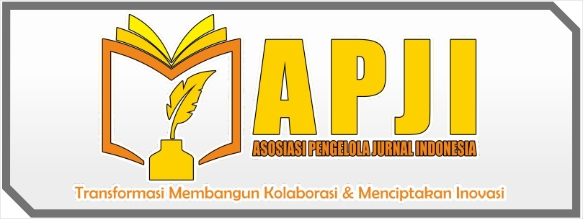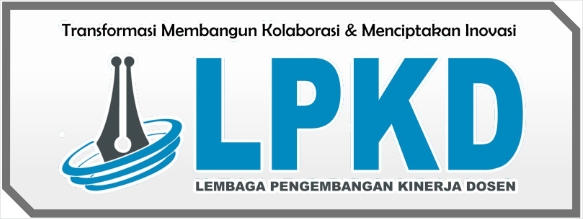Optimalisasi Penerapan Keselamatan dan Kesehatan Kerja di Laboratorium
DOI:
https://doi.org/10.55606/kreatif.v2i4.730Keywords:
Occupational Health Safety, laboratory, work accidentsAbstract
Working in a laboratory is inextricably linked to the various potential hazards. The purpose of this study was to determine the extent of the application of occupational safety and health in laboratories and to find out the obstacles to the application of OHS in Faculty of Agriculture, Sriwijaya University. This research is a descriptive study with a qualitative approach and was conducted in eight laboratories in the Faculty of Agriculture, namely the Agricultural Cultivation Laboratory, Agricultural Product Technology Laboratory, Plant Pest and Disease Laboratory, Soil Laboratory, Aquaculture Laboratory, Agricultural Product Technology Laboratory, Animal Nutrition and Feed Laboratory. The data was collected by means of interview, observation and documentation. Based on the results of the research, it can be concluded that the overall percentage of questionnaire results is 54% who answered yes and 46% answered no. This means that most of the Agricultural Faculty laboratories have not implemented OHS properly.
References
Aydogdu C. The Effect of Chemistry Laboratory Activities on Students’ Chemistry Perception and Laboratory Anxiety Levels.International Jornal of Progressive Education 13, no 2 (2017): 85-94.
Badan Standardisasi Nasional, SNI 03-6572-2001 Tata Cara Perancangan Sistem Ventilasi Dan Pengkondisian Udara Pada Bangunan Gedung. In: Unspecified Badan Standardisasi Nasional Indonesia, 2001.
Badan Standardisasi Nasional, SNI 03-6575-2001 Tata cara perancangan sistem pencahayaan buatan pada bangunan gedung. In: UNSPECIFIED Badan Standardisasi Nasional Indonesia. 2001 .
Cahyaningrum D. Occupational Health and Safety Program in the Educational Laboratory. Journal of Educational Laboratory Management 2, no 1 (2020): 35-40.
Gille J, Schmidt T, Dragu A, Emich D, Hilbert-Carius P, Kremer T. Electrical injury –a dual center analysis of patient characteristics, therapeutic specifics and outcome predictors. Scand J Trauma Resusc Emerg Med 26 (2018): 43.
Government of the Republic of Indonesia. Contitution Number 1 Year 1970, Concerning Work Safety. Jakarta: Government of the Republic of Indonesia, 1970.
Hill C. Wearables – the future of biometric technology, Elsevier: Biometric Technology Today, 2015; (8), 5-9.
Ismara, Ima K, Prianto, E. Keselamatan Dan Kesehatan Kerja di Bidang Kelistrikan (Electric Safety). Solo: Adicandra Media Grafika, 2016.
Isnainy H., Hasyim H., Sitorus R.J. Implementation of Occupational Safetyand Health at Laboratory chemistry of Matemathics and Natural Sciences Faculty of Sriwijaya University 2009. Jurnal Ilmu Kesehatan Masyarakat 5, no 1 (2014): 19-24.
Kancono. Manajemen Laboratorium IPA. Bengkulu: Unit Penerbiatan FKIP UNIB, 2010.
Kemenkes. Peraturan Menteri Kesehatan Republik Indonesia Nomor 23 Tahun 1992 Tentang Kesehatan, pasal 23, Jakarta: Menteri Kesehatan, 1992.
Kemenkes. Peraturan Menteri Kesehatan Republik Indonesia Nomor 43 Tahun 2013 Tentang Cara Penyelenggaraan Laboratorium Klinik yang Baik. Jakarta: Menteri Kesehatan, 2013.
KEMENPANRB. Peraturan Menteri Pendayagunaan Aparatur Negara dan Reformasi Birokrasi Republik Indonesia No. 7 Tahun 2019 Tentang Jabatan Fungsional Pranata Laboratorium Pendidikan. Jakarta: KEMENPANRB RI, 2019.
Kusumaningtyas N.I.F., Satrio T. Evaluation of the Occupational Health and Safety Implementation in the Pharmacy Laboratory of University X Surabaya. The Indonesian Journal of Occupational Safety and Health 11, no 1 (2022): 43-53.
Munifah Z., Windayani N., Sari. Making A Work Safety And Security Magazine Information-Oriented Laboratory. Gunung Djati Conference Series 2, (2021): 265-277.
National Academies of Sciences, Engineering, and Medicine (NASEM). Chemical Laboratory Safety and Security: A Guide to Developing Standard Operating Procedures. Committee on Chemical Management Toolkit Expansion: Standard Operating Procedures. Washington, DC: The National Academies Press, 2016.
Ormston R, Spencer L, Barnard M, Snape D. The foundations of qualitative research. In J. Ritchie, J. Lewis, C. Nicholls & R. Ormston (Eds.), Qualitative Research Practice: A Guide for Social Science Students and Researchers. Los Angeles: Sage. 2014.
Pratomo SA, Murti B. Evaluasi Keselamatan Kerja Listrik Laboratorium Permesinan KapalUniversitas Maritim AMNI Semarang Dengan MetodeAnalitycal Network Process(ANP). Dinamika Bahari 2, no 1 (2021): 28-38.
Purnomo E.S., Saputro D.E. Evaluasi Penerapan Prinsip Kesehatan dan Keselamatan Kerja (K3) pada Pelaksanaan Kegiatan Praktikum Mikroteknik di Laboratorium Biologi Fakultas Sains dan Teknologi UIN Sunan Kalijaga. Integrated Lab Journal 4, no 2 (2018): 207–216.
Rahmantiyoko A., Sunarmi, S. and Rahmah, F. K. Keselamatan dan Keamanan Kerja Laboratorium’, IPTEK Journal of Proceedings Series, no 4 (2019): 36–38.
Ramadhani S.P. Pengelolaan Laboratorium (Panduan Para Pengajar dan Inovator Pendidikan). Jawa Barat: Yayasan Yiesa Rich, 2020.
Shrivastava S. Safety Procedures In Science Laboratory. International Journal of Engineering And Scientific Research 5, no 7 (2017): 54-64.
Siswanto A, Efendi A, Yulianti A. Alat Kontrol Akses Pintu Rumah Dengan Teknologi Sidik Jari di Lingkungan Rumah Pintar dengan Data yang di Enkripsi. Jurnal Penelitian Pos dan Informatika 8, no 2 (2018): 97-107.
Solichin, Endarto FEW, Ariwinanti D. Penerapan Personal Protective Equipment (Alat Pelindung Diri) Padalaboratorium Pengelasan. Jurnal Teknik Mesin 22, no 1 (2014): 89-103.
Styawan B., Sukardi T., Rahdiyanta D., Wijanarka B.S., Ngadiyono Y. A comparative study of the occupational health and safety implementation in the industries and vocational high schools in Yogyakarta. IOP Conference Series: Materials Science and Engineering Volume 535, (2019). IOP Publishing.
Sudiana I.K., Suja I.W., Sastrawidana I.D.K., Sukarta I.N. Basic Chemistry Practicum Handbook with Occupational Health and Safety (K3) to Prevent Work Accidents in Laboratory: Validity and Feasibility. Jurnal Pendidikan dan Pengajaran 54, no 1 (2021): 190-198.
Sugiyono. Metode Penelitian Kuantitatif Kualitatif dan R & D. Bandung: Alfhabeta. 2011.
Wahyunan A, Sutijono, Sholah A. Optimalisasi Penerapan Keselamatan Dan Kesehatan Kerja Pada Laboratorium Jurusan Teknik Mesin Universitas Negeri Malang. Jurnal Teknik Mesin 23, no 2 (2015): 1-10.
Walters A.U.C., Lawrence W., Jalsa N.K. Chemical laboratory safety awareness, attitudes and practices of tertiary students. Safety Science, (2017); 96: 161-171.
Wiryawan A, Retnowati R, Sabarudi A. Kimia Analitik Untuk SMK, Direktorat Pembinaan Sekolah Menengah Kejuruan. Jakarta: Direktorat Jenderal Manajemen, Pendidikan Dasar dan Menengah, Departemen Pendidikan Nasional, 2008.
Wong F.K., Chan A.P., Wong A.K., Hon C.K., Choi T.N. Accidents of Electrical and Mechanical Works for Public Sector Projects in Hong Kong. International Journal of Environmental Research and Public Health 15, no 3 (2018).
World Health Organization (WHO). Laboratory Biosafety Manual, Fourth Edition And Associated Monographs). Licence: CC BY-NC-SA 3.0 IGO. ISBN 978-92-4-001131-1 (electronic version). 2020.
Yamin M. Perilaku Keselamatan dan Kesehatan Kerja (K3) Siswa dalam Pembelajaran Praktikum di SMKN 2 Sidenreng. Jurnal of Admiration 1, no 3 (2020): 207–214.















